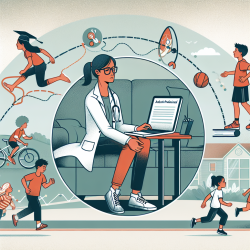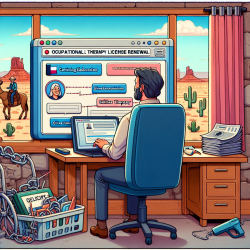As practitioners dedicated to improving the lives of children, it's essential to stay abreast of the latest research and incorporate evidence-based strategies into our practice. A recent study titled The Post-Modern Era: Chronic Disease and the Onslaught of a Sedentary Lifestyle by Roy J. Shephard (2015) highlights the significant impact of sedentary behaviors on chronic disease prevalence, particularly in children.
Key findings from this study underscore the urgency of addressing sedentary lifestyles to prevent chronic diseases such as obesity, diabetes, and cardiovascular conditions. Here, we will discuss how these findings can be implemented to improve outcomes for children through online therapy services provided by TinyEYE.
Understanding the Impact of Sedentary Lifestyles
The study indicates that the shift towards sedentary lifestyles has contributed to an alarming rise in chronic diseases. Key statistics include:
- Obesity rates in children have more than doubled in the past 30 years.
- Physical inactivity is linked to increased risks of cardiovascular diseases and type 2 diabetes.
- Children who engage in regular physical activity exhibit better academic performance and mental health.
Implementing Research Findings in Online Therapy
Given the data, it’s clear that promoting physical activity should be a priority in our therapeutic interventions. Here are several strategies to incorporate these findings into TinyEYE’s online therapy services:
1. Integrate Physical Activities into Therapy Sessions
Encourage movement-based activities during sessions. For instance, incorporate short, engaging physical exercises tailored to the child’s interests and abilities. Activities such as jumping jacks, stretching, or dance breaks can be seamlessly integrated into speech therapy exercises.
2. Educate Families on the Importance of Physical Activity
Provide families with resources and guidance on promoting physical activity at home. Educate them about the benefits of reducing screen time and encouraging outdoor play, sports, or family walks.
3. Set Realistic and Achievable Goals
Work with children and their families to set realistic physical activity goals. Use data from the study to emphasize the importance of even small increases in activity levels. Goals could include daily step counts, participation in physical games, or regular exercise routines.
4. Use Technology to Promote Activity
Leverage technology to track and encourage physical activity. There are numerous apps and devices designed to make physical activity fun and engaging for children. Incorporate these tools into your therapy plans to motivate children to stay active.
5. Advocate for School and Community Programs
Encourage schools and community organizations to support physical activity programs. Share research findings with educators and policymakers to advocate for more physical education and recess time in schools.
Encouraging Further Research
While implementing these strategies can significantly impact children's health, ongoing research is crucial. Practitioners should stay informed about the latest studies and continually seek to refine their approaches based on new evidence.
To read the original research paper, please follow this link: The Post-Modern Era: Chronic Disease and the Onslaught of a Sedentary Lifestyle










